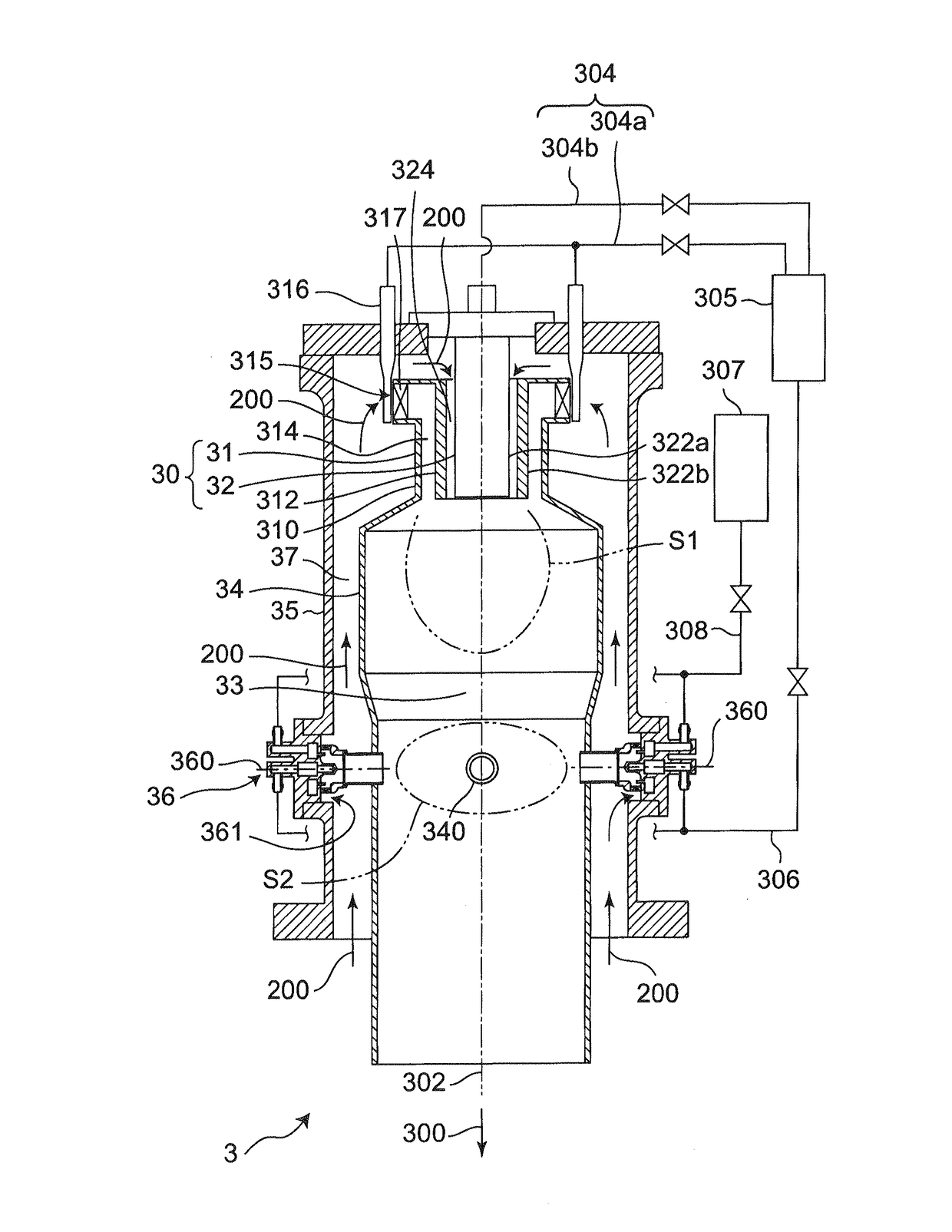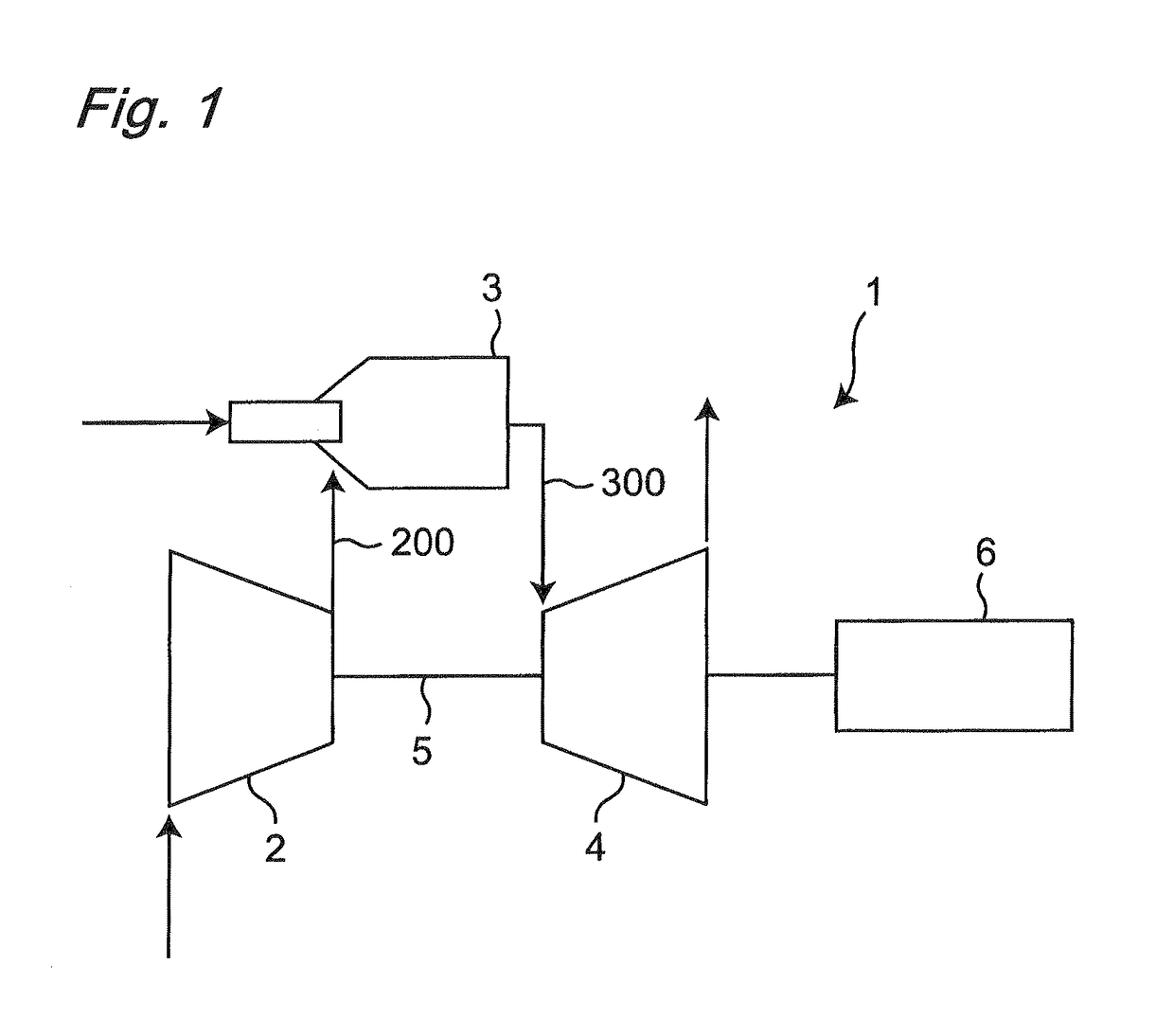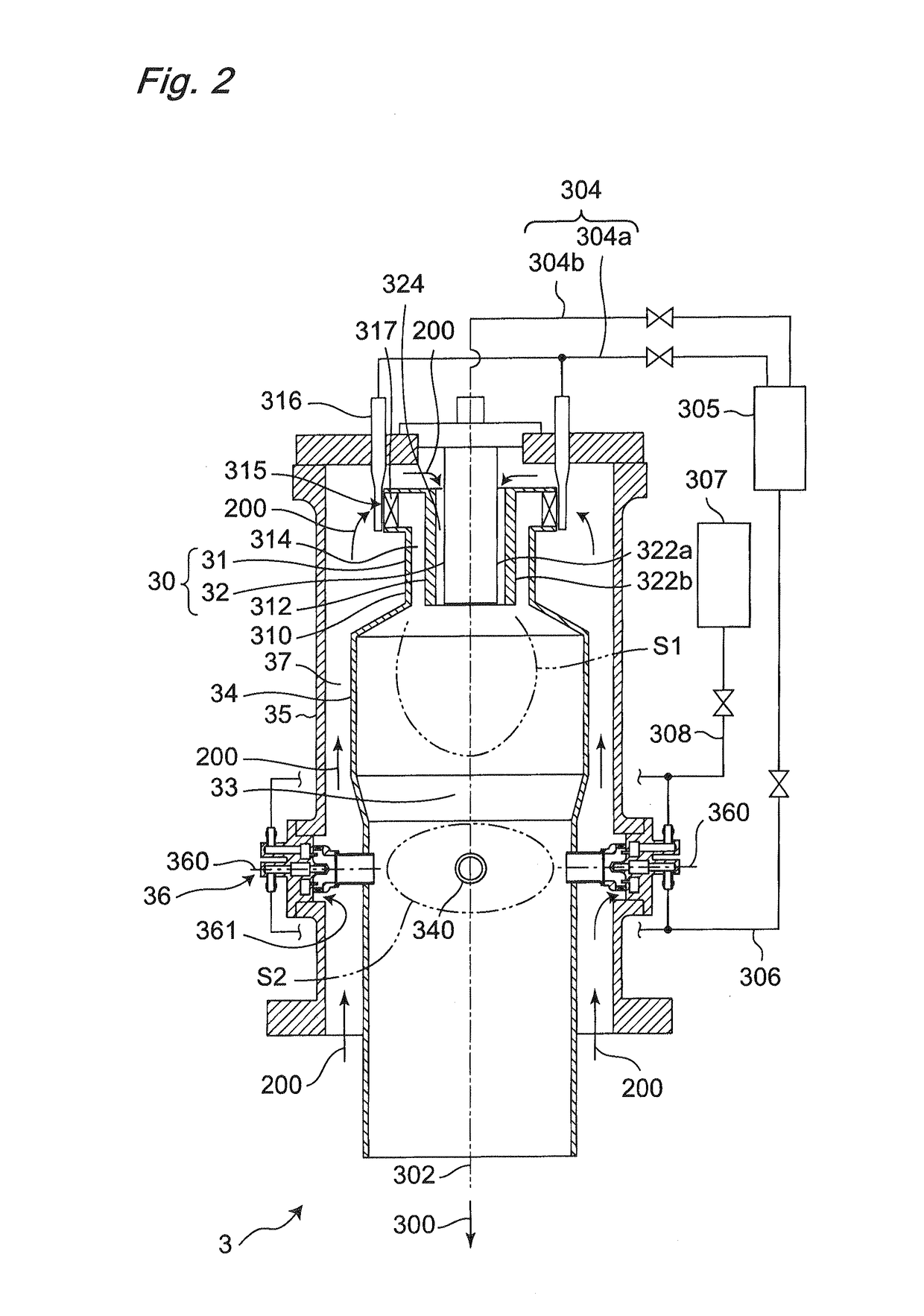Burner, combustor, and gas turbine
- Summary
- Abstract
- Description
- Claims
- Application Information
AI Technical Summary
Benefits of technology
Problems solved by technology
Method used
Image
Examples
first embodiment
[0038]A general construction and function of a gas turbine is shown in FIG. 1. In the gas turbine 1, a compressor 2 sucks an atmospheric air to generate a compressed air 200. The compressed air 200 is combusted together with a fuel in a combustor 3 to generate a high-temperature high-pressure combustion product gas (hereinafter referred to as “combustion exhaust gas 300”). The combustion exhaust gas 300 is supplied to a turbine 4 and used for rotating a rotor 5. The rotation of the rotor 5 is transmitted to the compressor 2 and used for generating the compressed air 200 (hereinafter referred to as “combustion air 200”), while the rotation of the rotor 5 is transmitted to a generator 6 and used for electric generation, for example.
[0039]FIG. 2 shows the combustor 3. In this embodiment, the combustor 3 is a reverse-flow can-type combustor in which a flow direction of the compressed air 200 supplied from the compressor (see FIG. 1) (a direction from the top to the bottom of FIG. 1) and...
second embodiment
[0059]A reheating burner according to a second embodiment of the present invention will be described. FIG. 6 shows the reheating burner 36 according to the second embodiment of the present invention. The basic structure of the reheating burner 36 according to this embodiment is the same as the reheating burner 36 according to the first embodiment described with reference to FIG. 3 and, therefore, the same constituent portions are denoted by the same reference numerals and will not be described.
[0060]The reheating burner 36 according to this embodiment has two points different from the reheating burner 36 according to the first embodiment described with reference to FIG. 3 in that an inverted conical straightening protrusion part 390 extending in the premixing flow path 367 coaxially with the outer cylinder 364 is formed on the downstream-side wall surface of the head block 361 and that the first fuel introduction part 368 is configured to inject the natural gas from a plurality of f...
third embodiment
[0063]A reheating burner according to a third embodiment of the present invention will be described. FIGS. 7 to 10 show variations of the reheating burner 36 according to the third embodiment of the present invention. The structure of the reheating burner 36 of this embodiment is the same as the reheating burner 36 according to the first embodiment described with reference to FIG. 3 except that the burner has a second air introduction part 393 for introducing the combustion air 200 into the premixing flow path 367 on the downstream side relative to the first fuel introduction part 368 and, therefore, the same constituent portions are denoted by the same reference numerals and will not be described.
[0064]FIG. 7 shows a first example of the reheating burner according to the third embodiment of the present invention. The second air introduction part 393 of the first example is a gap formed between the first cylindrical part 362 (the first cylindrical body) and the second cylindrical pa...
PUM
 Login to View More
Login to View More Abstract
Description
Claims
Application Information
 Login to View More
Login to View More - R&D
- Intellectual Property
- Life Sciences
- Materials
- Tech Scout
- Unparalleled Data Quality
- Higher Quality Content
- 60% Fewer Hallucinations
Browse by: Latest US Patents, China's latest patents, Technical Efficacy Thesaurus, Application Domain, Technology Topic, Popular Technical Reports.
© 2025 PatSnap. All rights reserved.Legal|Privacy policy|Modern Slavery Act Transparency Statement|Sitemap|About US| Contact US: help@patsnap.com



